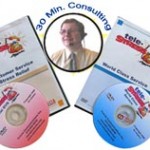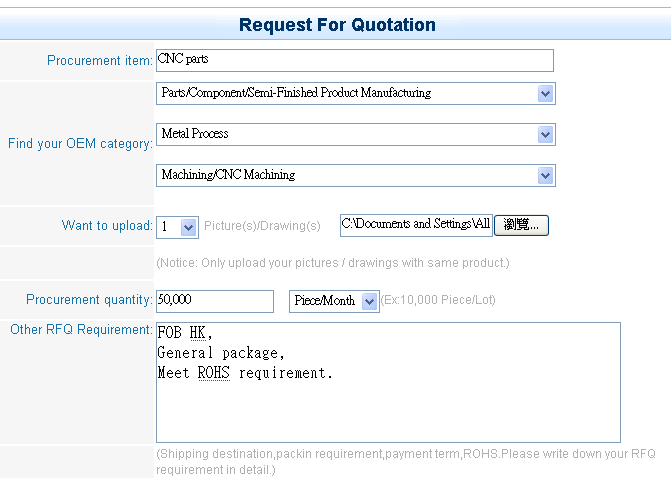
Harry Hough, PhD, founder of the American Purchasing Society
While business a bankruptcy may not mean that a company goes completely out of business, it does mean that buyers may have difficulty in obtaining quality products or services delivered in a timely fashion, if at all.
Not just bankruptcy
Supply chain interruption can also result from other causes. For example, when a company is bought out the new owners may decide to discontinue a certain product. Supply can also be disrupted because of a fire, flood, or other natural dis aster. Supply from international sources can be curtailed because of war or government restrictions. At a premium, the buyer can help offset some of these causes by split sourcing and by carrying a large safety stock inventory. That is impractical when usage quantities are low or when the buyer must pay for required expensive duplicate tooling.
aster. Supply from international sources can be curtailed because of war or government restrictions. At a premium, the buyer can help offset some of these causes by split sourcing and by carrying a large safety stock inventory. That is impractical when usage quantities are low or when the buyer must pay for required expensive duplicate tooling.
It is therefore important to evaluate the stability of suppliers when purchased products are critical for the buyer’s business and alternative sources of supply are not available.
Some remedies
Buyers should include clauses in any long-term contracts that permit the buyer to purchase from another source and even cancel the agreement if any of the above mentioned situations develop. But even if the buyer can locate an alternate source, there may be a costly delay in obtaining delivery. There is no 100% sure way of preventing an i nterruption of supply, but taking due diligence reduces exposure to the risks. Here is how to minimize the risks.
nterruption of supply, but taking due diligence reduces exposure to the risks. Here is how to minimize the risks.
- Know your supplier. Check bank and customer references. Get a credit report and learn about about the supplier’s operations.
- Determine how long the company has been in business. Most failures occur within the first few years. Companies that have been around for a long time are more stable.
- Ascertain employee turnover rate. Stable companies keep employees longer. Employees don’t leave a well-run, profitable company.
- Learn what labor unions are involved and when the labor contracts will expire. This information is also useful to prepare for price negotiations. Ask salespeople their opinion of their employer’s labor and employee relations. What is the labor relations history? Have there been strikes? When was the last one? Beware of labor problems. Strikes can tie up production for years. It is sometimes difficult to get tooling moved.
- Obtain financial statements for three years from the supplier, or a D & B report. If the supplier’s stock is publicly traded, the financial statements are public records and can be easily obtained. If it is a closely held corporation or a proprietary company, then the buyer must convince the supplier to provide the
 statements. The buyer should indicate that he or she would sign a nondisclosure agreement guaranteeing the confidentiality of the information. If the request is refused, the buyer should carefully consider the risks of dealing with the source.
statements. The buyer should indicate that he or she would sign a nondisclosure agreement guaranteeing the confidentiality of the information. If the request is refused, the buyer should carefully consider the risks of dealing with the source. - Conservative organizations may not grow as fast as high flyers, but they usually last a lot longer. Look at the amount of revenue for each of the three years. If it has gone up steadily, it is a good sign. Small increases may be better than large ones. If there are declines, small declines may not be significant. If there is a decline every year, it could mean trouble for the buyer.
- If profit has gone up every year, chances are the company is healthy. Small increases in profit may be better than very large ones. Look at the debt ratio. Nearly all well run companies have debt and no problem is indicated as long as the organization can pay the interest and make any necessary payments against the principal. Compare the current liabilities to the current assets to see if the company has the ability to pay bills when due.
- Ask salespeople about the customer base. Companies with only a few customers or where one or two customers provide most of the sales dollar are in a vulnerable position. By losing a major customer, the company may not be able to continue to be profitable or even to stay in business.
- Finally, compare the supplier’s performance with that of the industry. Learn if there are too many competitors for all to survive.









 Universally there are four major elements of cost – Quality, Service, Delivery and Price. The sum of these four amounts to the TCO. Since the importance of each element depends upon the purchase, take the example of replacement valves for cardiac surgery.
Universally there are four major elements of cost – Quality, Service, Delivery and Price. The sum of these four amounts to the TCO. Since the importance of each element depends upon the purchase, take the example of replacement valves for cardiac surgery. 


